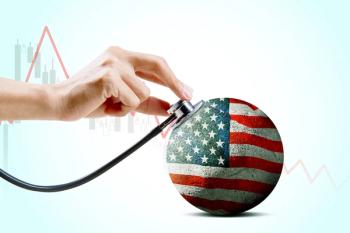
Women need better, more affordable cardiovascular care
While often thought of as an affliction that primarily affects men, heart disease is the leading cause of death for women in America.
Editor's Note: Welcome to Medical Economics' blog section which features contributions from members of the medical community. These blogs are an opportunity for bloggers to engage with readers about a topic that is top of mind, whether it is practice management, experiences with patients, the industry, medicine in general, or healthcare reform. The opinions expressed here are that of the authors and not UBM / Medical Economics.
One woman dies from cardiovascular diseases (CVD) and stroke every
Where do we start? First, women must be aware of the dangers CVD poses and change their lifestyles to mitigate risk factors. While CVD kill as many women every year as cancer, respiratory disease, and diabetes combined, fewer than half of American women realize how deadly CVD can be. A recent
Second, providers must learn to better diagnose and treat heart disease in women. Studies have
One obstacle to diagnoses and treatment is that women display different heart attack symptoms than men, and we must educate physicians and other providers on how to look and test for those symptoms. For instance, when the heart muscle has been damaged in a heart attack, it releases troponin proteins into the blood. Women do not produce as much troponin as men, which often leads to under-recognition and less aggressive treatment in women after a cardiovascular event. A new test, called a High Sensitive Troponin (HST) test, can help healthcare providers detect women’s lower peak troponin levels, allowing physicians to better identify when a woman has suffered a heart attack. Getting the HST tests into more labs and educating female patients to ask for an HST if they think they had a heart attack has the potential to save lives.
We also must remove barriers to treatment facing all CVD patients. This includes increasing access to breakthrough medications like PCSK9 inhibitors, which can dramatically reduce the artery clogging levels of “bad” cholesterol-which can be particularly necessary for female patients, whose cholesterol levels often spike after menopause. Typically, these potentially life-saving cholesterol-reducing medications are very expensive, putting them out of reach for price-sensitive patients and causing many insurers to refuse to
Heart disease is the leading cause of death for all American’s, not just men, and yet we know that this condition is highly preventable. That prevention must start by first educating women about the disease and the deadly consequences of underestimating it. That education must also apply to physicians and other providers, who must consider both the differences in sex and gender when diagnosing and treating CVD and understand how new tests, like HST, can be used to impact the management of heart disease in women. And we must encourage drug manufacturers and insurers to make the latest and most effective medications available to all patients whose lives may be saved by having access to the latest treatments.
Theresa Rohr-Kirchgraber, MD, is the past president of the American Medical Women’s Association and the Executive Director of the Indiana University National Center of Excellence in Women’s Health.
Newsletter
Stay informed and empowered with Medical Economics enewsletter, delivering expert insights, financial strategies, practice management tips and technology trends — tailored for today’s physicians.




















